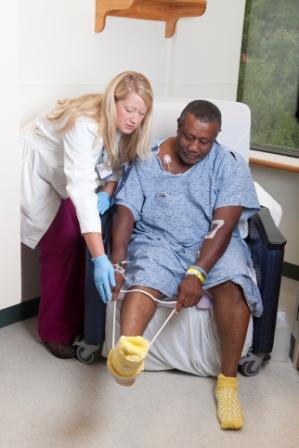In general, we think of hospitals as places that provide good outcomes. We arrive sick and in need of care, and we leave with improved health or quality of life. But when older adults enter the hospital, these good outcomes are far from assured. In fact, many elderly patients leave the hospital in far worse shape than when they arrived.

Credit: liko.com.
According to the study Hospital Management of Older Adults, 40 percent of patients over the age of 85 could not maintain their independence in the community after a hospitalization, even though they had gotten along well at home before. Most of these people go to skilled nursing facilities. Very few return home.
It’s not clear what factors most influence this physical and cognitive decline. In some cases, it begins with the physical illness, such as an infection or minor stroke. But other factors, such as radical changes to usual routines, unappetizing food and multiple caregivers likely contribute as well. Medical literature suggests both might be true.
Lack of physical activity also plays an important role. According to an article in the Annals of Internal Medicine, bed rest is particularly harmful to hospitalized elderly patients, many of whom have already lost bone density and muscle mass. Experts believe that the interaction of physical inactivity, lack of sleep and poor nutrition can cause significant impairment in as little as two days.
Specialized Units May Help

Credit: Duke University
To address this concern, some hospitals have begun treating the elderly in specialized units that address their unique needs. At San Francisco General in California, for example, high-risk seniors are cared for in the Acute Care for Elders (ACE) unit. The ACE unit staff focuses on minimizing interventions and helping patients maintain their independence throughout their hospital stay. Hospitalized elderly patients get out of bed often, and staff encourages them to eat in the communal dining room. Discharge planning is also a high priority. The goal is to get patients home as quickly as possible and avoid nursing home stays.
Sadly, ACE programs are still few and far between. Only about 200 hospitals across the United States have implemented the model, in part because they accept that poor outcomes in hospitalized elderly patients is the norm. Hopefully, as more people become aware of the dangers of hospitalization in the elderly, that will change.

 Outcomes Are Poor for Hospitalized Elderly Patients
Outcomes Are Poor for Hospitalized Elderly Patients




 Composting Bodies Is Now Legal in a Dozen States
Composting Bodies Is Now Legal in a Dozen States














